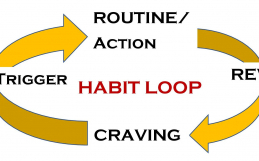Are you using proper posture? Not exactly sure what proper posture looks like? Luckily, in the book ‘Becoming a Supple Leopard,’ Dr. Kelly Starrett gives us a simple bracing sequence to help us identify exactly what proper posture is. In addition, Dr. Kelly gives us a simple test that we can implement throughout the day or when you suspect your posture has become compromised.
Most of us tend to fall into a shoulders rounded and heads forward position throughout the day, this is especially true if you have a sedentary job. This position causes all sorts of issues down the chain that can lead to lower back or knee issues. Learning to fix this compromised posture is crucial.
Bracing Sequence
- Screw your feet into the ground.
Position your feet so that they are pointed straight and right under your hips. Pretend to move your feet away from each other. You will not be physically moving your feet away, just creating force like you are. - Squeeze your Butt
Activate your glutes which will help position your pelvis. Pretend you just ate beans and are on a hot date. - Take a Deep Breath In
Squeeze your stomach with “at least 20 percent tension in your abs to set and maintain a braced spine for basic positions like sitting, standing, and walking.” It is important to note here that you don’t want to squeeze too much otherwise you will be unable to breathe. Squeeze just enough so that if someone were to gently whack your stomach it would not hurt. As you breathe in, be sure to use your diaphragm. You can ensure this by placing your hand on your stomach to see if it is moving in and out (not your chest). - Balance your rib cage over your pelvis and get your belly tight as you exhale
Basically as you exhale do not lose the “20 percent tension in your abs.” - Set your head and shoulders in a neutral position
Pull your head back so your ears are over your shoulders, shoulders are over hips, and ankles are directly below your hips.
The Two-Hand Rule
Keeping the above steps in mind can get confusing at first. But eventually over time you will rewire your brain to keep that position normally. It does get easier, but still leads to the question of “What about when not standing?” For that Dr. Starrett uses the two hand rule.
- Take one thumb and put in on your sternum with your fingers splayed and palm facing down.
- Your second hand also has fingers spread out but your palms are facing up and your thumb is on your pubic bone.
This test creates two visible parallel lines that you can use to assess your posture. If your hands move further apart, your top hand will not be parallel to the bottom and if you slouch forward your hands move closer together. You can repeat this test when laying down, sitting down, or when you are exercising to make sure your spine is neutral.





